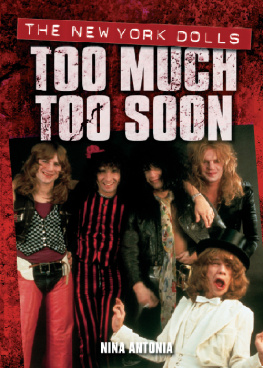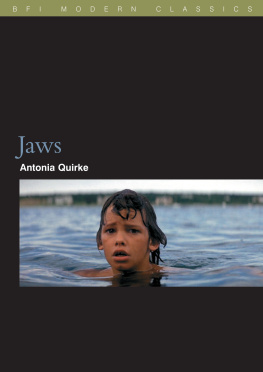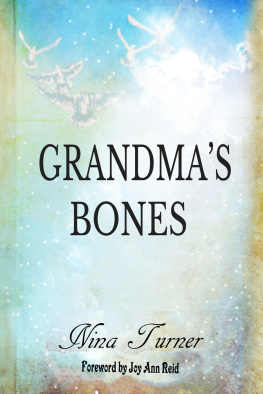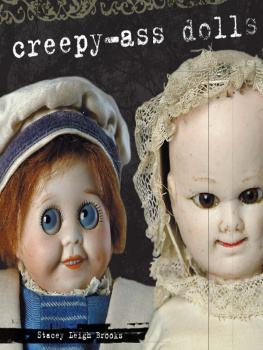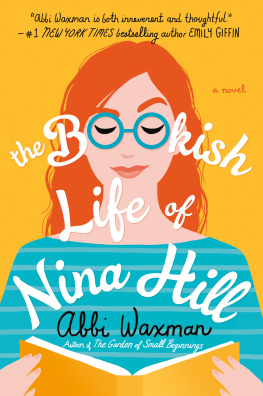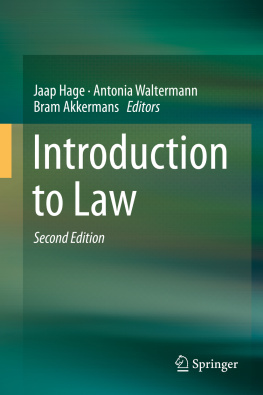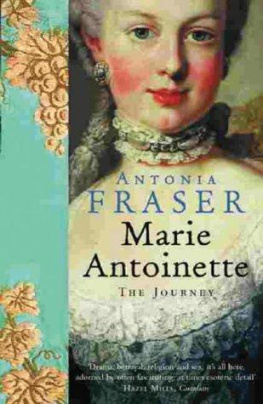Nina Antonia - The New York Dolls: Too Much Too Soon
Here you can read online Nina Antonia - The New York Dolls: Too Much Too Soon full text of the book (entire story) in english for free. Download pdf and epub, get meaning, cover and reviews about this ebook. year: 2006, publisher: Omnibus Press, genre: Non-fiction / History. Description of the work, (preface) as well as reviews are available. Best literature library LitArk.com created for fans of good reading and offers a wide selection of genres:
Romance novel
Science fiction
Adventure
Detective
Science
History
Home and family
Prose
Art
Politics
Computer
Non-fiction
Religion
Business
Children
Humor
Choose a favorite category and find really read worthwhile books. Enjoy immersion in the world of imagination, feel the emotions of the characters or learn something new for yourself, make an fascinating discovery.
- Book:The New York Dolls: Too Much Too Soon
- Author:
- Publisher:Omnibus Press
- Genre:
- Year:2006
- Rating:5 / 5
- Favourites:Add to favourites
- Your mark:
- 100
- 1
- 2
- 3
- 4
- 5
The New York Dolls: Too Much Too Soon: summary, description and annotation
We offer to read an annotation, description, summary or preface (depends on what the author of the book "The New York Dolls: Too Much Too Soon" wrote himself). If you haven't found the necessary information about the book — write in the comments, we will try to find it.
The New York Dolls: Too Much Too Soon — read online for free the complete book (whole text) full work
Below is the text of the book, divided by pages. System saving the place of the last page read, allows you to conveniently read the book "The New York Dolls: Too Much Too Soon" online for free, without having to search again every time where you left off. Put a bookmark, and you can go to the page where you finished reading at any time.
Font size:
Interval:
Bookmark:

Nina Antonia has contributed numerous articles to Mojo and Record Collector, and is a chronicler of the fatally famous. Her books include In Cold Blood: the authorised biography of Johnny Thunders and The One And Only: the authorised biography of Peter Perrett and The Only Ones.

Copyright 1998 Omnibus Press
This edition 2011 Omnibus Press
(A Division of Music Sales Limited, 14-15 Berners Street, London W1T 3LJ)
EISBN: 978-0-85712-673-3
The Author hereby asserts his / her right to be identified as the author of this work in accordance with Sections 77 to 78 of the Copyright, Designs and Patents Act 1988.
All rights reserved. No part of this book may be reproduced in any form or by any electronic or mechanical means, including information storage and retrieval systems, without permission in writing from the publisher, except by a reviewer who may quote brief passages.
Every effort has been made to trace the copyright holders of the photographs in this book, but one or two were unreachable. We would be grateful if the photographers concerned would contact us.
A catalogue record of this book is available from the British Library.
For all your musical needs including instruments, sheet music and accessories, visit www.musicroom.com
For on-demand sheet music straight to your home printer, visit www.sheetmusicdirect.com
My gratitude goes out to everybody who agreed to be interviewed. I would especially like to thank Peter Jordan and Sylvain Sylvain.
I would also like to acknowledge the contributions of the following: Mariann Bracken & family, Chris Charlesworth, Randy Chase at Fishhead Records, Tom Crossley, Rob Dimery, Eve & Neil, George Gimarc, Clinton Heylin, Olga Larrett, Freddie Lynxx (for his discography), Pedro Mercedes, John Perry, Phyllis Stein. And of course, my dear Severina.
This book is dedicated to the memories of Billy Murcia, Johnny Thunders and Jerry Nolan, for whom it is too little, too late.
If this films an exit sign, then my deitys a mirage, like the image of heaven must be to men kneeling down at an altar. Its just some lost artists or artists wild stab in the dark at how life in the clouds would seem. Its scratchy, underlit. But its the only idea in this theater that hasnt burned out yet
(From Wrong by Dennis Cooper)
The New York Dolls put the Chaos Theory into rocknroll. Like the butterfly that rippled against an oncoming storm, causing a momentary rift in the flow of the universe that subsequently built up into a fearsome hurricane, few remember or even refer to the original creature of chaos, they just recall the consequences.
The New York Dolls were the Bowery butterflies that irrevocably altered the course of rocknroll. Their actual moment, 19711975, was brief but their influence, whether acknowledged or not, spans two decades. At various times during their fabulous reign heinous attempts were made to suppress their career by a conservative core within the music business. The Dolls appeared to prevail but they werent dancing, they were falling.
One boys good time is anothers booze-fuelled pill-popping endless party. The New York Dolls were a high time, high-wire act without a safety net. Their music reflected perfectly both the New York of the early Seventies and their own high intensity dramas: tom-toms beat over Manhattan, guitars wailed like cop car sirens, the vocals were guttural street corner captions, emphasised by sloppy kisses and wolf-whistles, silenced by a gun shot. Dirty angels with painted faces, the Dolls opened the box usually reserved for Pandora and unleashed the infant furies that would grow to become Punk. As if this legacy wasnt enough for one band, they also trashed sexual boundaries, savaged glitter and set new standards for rocknroll excess.
The Dolls nonchalant acts of artistic vandalism and liberation have long outlived them but their monument, if there was one, would surely stand on unhallowed ground, for they came in the end to represent all that is considered debauched in rock culture. In the twenty or so years since their demise, the Dolls have become a perpetual reference point as the archetypal, hedonistic rocknroll band. For their sins, The New York Dolls have been constantly ostracised by the guardians of the mainstream but are nevertheless revered by a legion of devotees and recognised by the media cognoscenti. Over the years a series of bands have covered Dolls tracks. Fragments of details rise to the surface in occasional documentaries. A car rips around a corner to a blast of the Dolls in a recent television commercial, yet the band isnt credited for it. The New York Dolls have pervaded contemporary culture but they do so in a glamorous semi-obscurity which is pretty much how it was when they were still together.
Baby Dolls
The New York Dolls may have looked like they just stepped right out of Manhattan Babylon as fully formed teenage transvestite hookers with street manners but they were not children of the inner city. They came from refugee, migrant and exiled stock, and they came of age in New Yorks outer boroughs where their families had settled in the Fifties.
Of the five principal boys, Sylvain Sylvain, christened Sylvain Mizrahi, travelled the furthest, from Cairo to New York via Paris. Following the Suez Canal crisis in 1956, Sylvains father lost his job as a banker in Cairo and, as Egyptian Jews, the family were forced into exile and obliged to relinquish their home and most of their possessions. Regardless of the political traumas, little Sylvain was enriched by a childhood spent in Cairo. Sylvain: Theres an Arab instrument called the oud, it looks like a guitar but its got a round back. The Arabs make them by hand and my father bought me a child-size one. Ill never forget the beat of Arabic music, its got an incredible rhythm.
Sylvain, his elder brother and parents boarded a Greek merchant ship bound for France, then journeyed to Paris where they lived in a hotel room in the artists quarter of Montmartre. With the help of a Jewish resettlement scheme, the Mizrahi family applied to go to the United States, crossing the Atlantic in 1961. Sylvain: I remember when we cruised into the harbour, it was rainy and cloudy. Me and my brother were on the deck and we saw the Statue of Liberty. To me the whole image of the United States was tall buildings, like New York. I was really taken in by the commercials of the time. I thought that every girl would look like Marilyn Monroe and that for breakfast youd have Bazooka bubblegum and then Coca-Cola for dinner!
Sylvain and his family were housed in Buffalo, which they were shocked to find was closer to Niagara Falls than New York city. They hastily relocated to Brooklyn before settling down in the borough of Queens, a largely family orientated district that boasts Shea Stadium as one of its most famous landmarks. The lawns of Queens are mowed with efficient regularity and the cars on its streets are polished to perfection. Its enough to turn any kid with a rebel streak towards rocknroll.
Sylvain was dispatched to Van Wyck junior high in Jamaica, a Queens neighbourhood, where his non-existent grasp of English made him an easy target. Sylvain: The first words I ever learned in English was Fuck you. The other kids would come up to me and say You speak English? and I would say No. They would go Fuck you. He quickly learned to adopt a wily self-protective attitude which was put to the test when an older boy, Alphonso Murcia, challenged Syl to a fight with his younger brother, Billy. When he issued the playground challenge Alphonso didnt realise that Billy and Syl were already acquainted, and the ensuing scrap was largely a put on. Sylvain: We werent friends but we werent enemies either. Billy was like Cmon, lets go. He had a lot of surly moves. We scuffled a little, kicked up some dust. It was more like a cartoon than a fight. Then we said, Why the fuck are we fighting?. We became the best of friends.
Font size:
Interval:
Bookmark:
Similar books «The New York Dolls: Too Much Too Soon»
Look at similar books to The New York Dolls: Too Much Too Soon. We have selected literature similar in name and meaning in the hope of providing readers with more options to find new, interesting, not yet read works.
Discussion, reviews of the book The New York Dolls: Too Much Too Soon and just readers' own opinions. Leave your comments, write what you think about the work, its meaning or the main characters. Specify what exactly you liked and what you didn't like, and why you think so.

